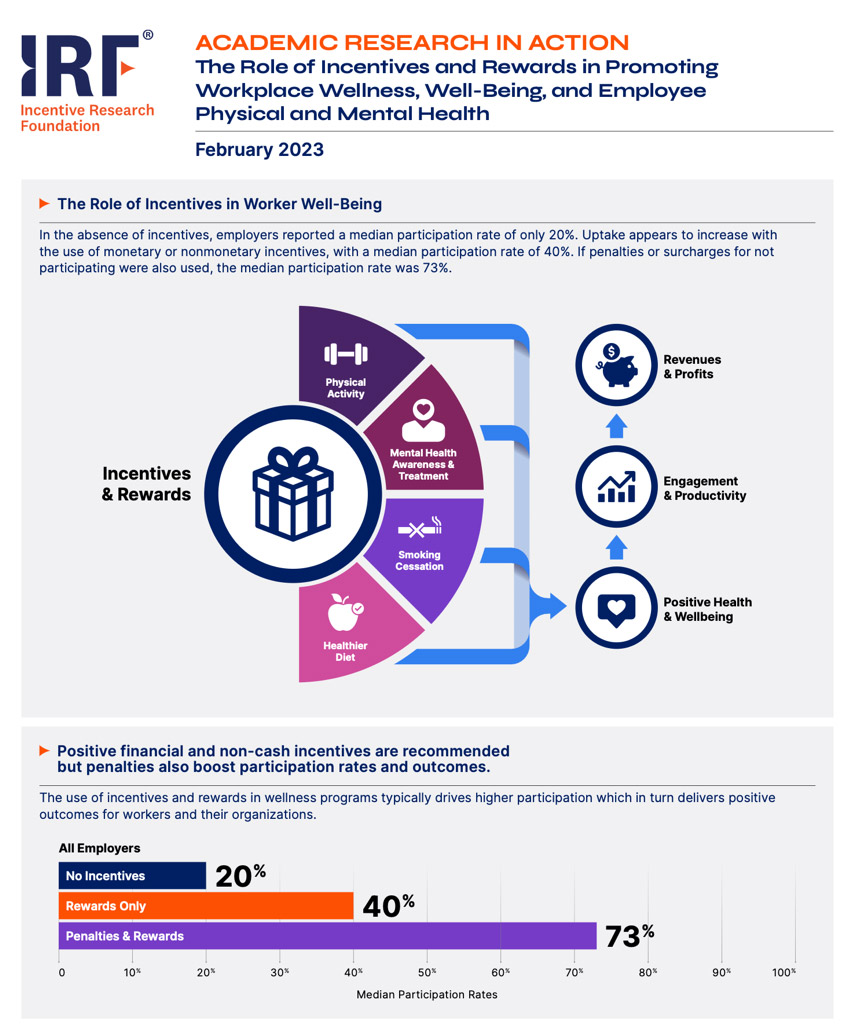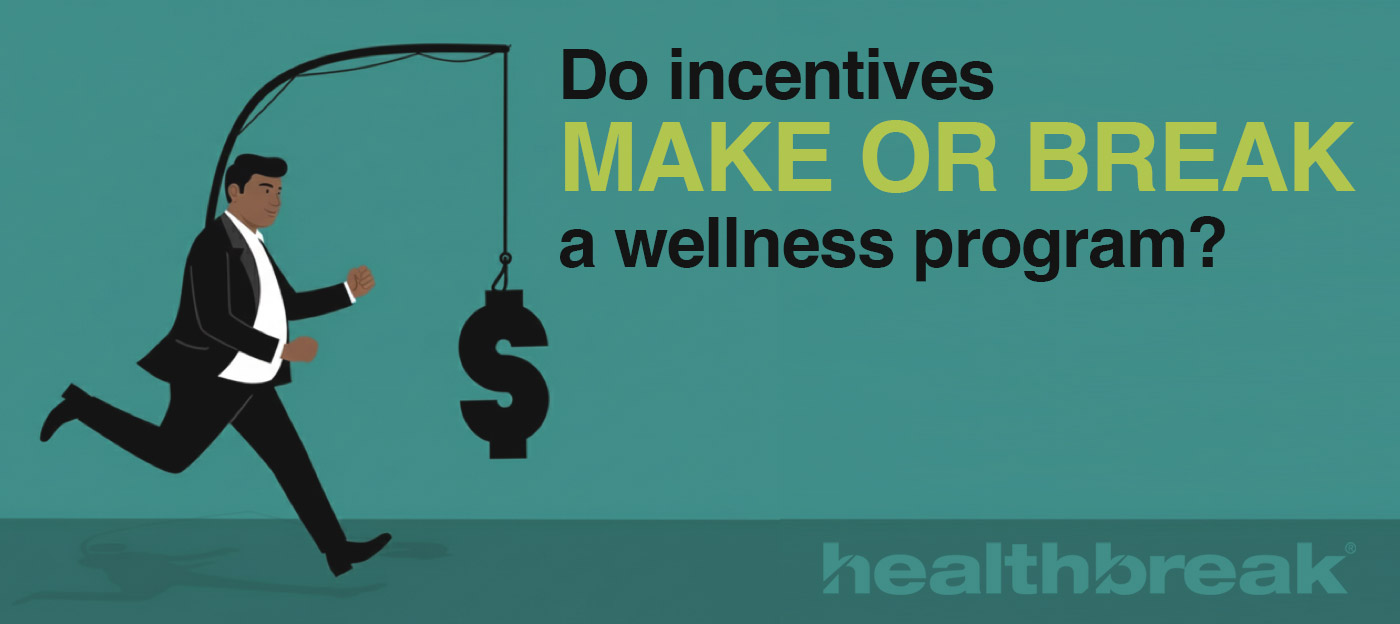Incentives are among the most debated elements of wellness program design. The central question: Do they truly drive participation and outcomes, or do they create dependency?
During our 35 years here at Healthbreak, we have seen both sides. Many clients achieved steady engagement when incentives were in place, but when those rewards were reduced or removed, participation dropped dramatically. One client’s screening rate fell from over 80% to single digits within a year. Incentives, when thoughtfully structured, have a clear influence on engagement.
Research also supports these observations. A study by RAND Corporation published in the American Journal of Health Promotion found that employees in incentive-based programs exercised approximately 20% more frequently than those without incentives and maintained this improvement over time (Crespin et al., 2016). The analysis found that companies using incentives had participation rates roughly 20 percentage points higher than those that did not.
From our experience and supporting research, three key lessons stand out when designing or adjusting wellness incentives.
HB Lesson 1: Adjust Gradually
Incentives work best when they evolve slowly. Step up increases to keep them meaningful without setting unrealistic expectations and reduce them gradually to avoid backlash. Sudden changes, especially removals, can quickly erode trust. A phased approach, combined with clear communication, helps maintain engagement even during budget shifts.
HB Lesson 2: Communicate the Why
Transparency matters as much as the reward itself. When incentives change, employees should understand the reason, whether it is due to budget realignment, program redesign, or a shift in goals. Explaining the “why” builds trust and helps employees see changes as part of sustaining the program rather than taking something away. RAND’s research reinforces that programs with clear expectations see stronger participation and follow-through.
HB Lesson 3: Ask Employees What They Value
Not all rewards motivate equally. Some employees respond to cash, while others prefer recognition or team-based goals. Short surveys can reveal what resonates most, and sharing results builds alignment and trust.
Research from Corporate Synergies reinforces this, noting that “the point of a wellness incentive program is not to give people what they say they want; it is to inspire changed behavior and engagement.” Their findings show that incentives are most effective when they have a clear connection to the behavior being promoted. Linking the “why” to the reward strengthens participation and long-term results.

The Bigger Picture
Incentives are not the entire strategy, but they often spark initial engagement. The strongest programs mix financial motivators, such as premium discounts or gift cards, with non-financial ones, such as gamification, recognition, or team challenges. Other publications mention that incentives are most effective when they “trigger early participation,” while long-term engagement depends on culture, communication, and design.
In our years of leading wellness programs, we have experienced firsthand which incentives spark engagement and which fall flat. What works for a hospital system will not always work for a manufacturer, a university, or a government workforce. Each organization has its own culture and challenges. Healthbreak helps employers design incentive strategies that boost participation and create lasting change. Lean on us to steer you in the right direction.
– Valerie Nagoshiner, MBA | President, Healthbreak
📩 Connect with us: info@healthbreakinc.com



